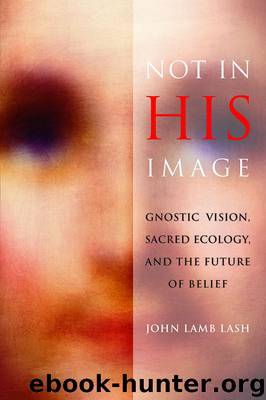Not in His Image: Gnostic Vision, Sacred Ecology, and the Future of Belief by Lash John Lamb

Author:Lash, John Lamb [Lash, John Lamb]
Language: eng
Format: epub
ISBN: 9781933392400
Publisher: Chelsea Green Publishing
Published: 2006-11-15T00:00:00+00:00
PEAK EXPERIENCE
The passage from Sir John Woodroffe cited above highlights the parallel between Gnostic instruction and Asian teachings on the self-liberating nature of the foundation awareness. Rigpa, the name given to the foundation awareness in Dzogchen, is equivalent to the Gnostic pronoia, literally, “foreknowing,” understood in the sense of a grounding awareness that exists before any knowing arises and makes all knowing possible. Ch’an, Zen, and Dzogchen equally affirm that primordial awareness can never be defiled or obscured, although it seems to be. To realize enlightenment is to know directly how the foundation awareness clears and liberates itself, spontaneously, moment by moment. This transcendental insight would have been universally realized and applied by the revealers of Gnostic tradition. A revealer was a living Buddha, a teacher of enlightenment. So were the telestai, the teachers in the Mysteries, Buddhalike, yet they did not teach only enlightenment or the self-liberating nature of mind. They taught how to own and evolve the spark of creative genius inborn to our species.
The Western Mystery tradition differed from its Asian counterparts on two distinct points: its educational emphasis, just noted, and its dedication to the Magna Mater, Gaia-Sophia. Although there is ample evidence to equate, say, the Prajñaparamita of Mahayana Buddhism with the Aeon Sophia of the Gnostics, there are significant differences to be observed as well. Religious scholars such as Guiseppe Tucci and Edward Conze confirm the parallels—for instance, Tucci called the wisdom of the Hindu Tantras “the expression of Indian gnosis”—but tend to ignore the differences. A definitive essay by Conze, “Buddhism and Gnosis,” published in 1979, outlines eight basic similarities and twenty-three close parallels between the two systems. In a key remark on the divergences, Conze wrote:
[The tenor] of Gnostic Sophia literature is essentially different from that of the Buddhist wisdom books. Assuming that man has fallen into this world from a more perfect condition, the Gnostics expended much ingenuity on trying to describe the process which brought about this fall. Classical Buddhism shows no interest in what may have preceded ignorance.204
Download
This site does not store any files on its server. We only index and link to content provided by other sites. Please contact the content providers to delete copyright contents if any and email us, we'll remove relevant links or contents immediately.
| Paganism | Wicca |
| Witchcraft |
Becoming Supernatural by Dr. Joe Dispenza(7112)
Tools of Titans by Timothy Ferriss(6955)
The Witchcraft of Salem Village by Shirley Jackson(6586)
Inner Engineering: A Yogi's Guide to Joy by Sadhguru(5904)
The Four Agreements by Don Miguel Ruiz(5518)
The Power of Now: A Guide to Spiritual Enlightenment by Eckhart Tolle(4761)
The Wisdom of Sundays by Oprah Winfrey(4631)
Room 212 by Kate Stewart(4111)
Fear by Osho(4089)
Pale Blue Dot by Carl Sagan(4013)
The David Icke Guide to the Global Conspiracy (and how to end it) by David Icke(3887)
Rising Strong by Brene Brown(3785)
Animal Frequency by Melissa Alvarez(3757)
How to Change Your Mind by Michael Pollan(3681)
Sigil Witchery by Laura Tempest Zakroff(3656)
Real Magic by Dean Radin PhD(3572)
Secrets of Antigravity Propulsion: Tesla, UFOs, and Classified Aerospace Technology by Ph.D. Paul A. Laviolette(3476)
The Art of Happiness by The Dalai Lama(3389)
Man and His Symbols by Carl Gustav Jung(3322)
